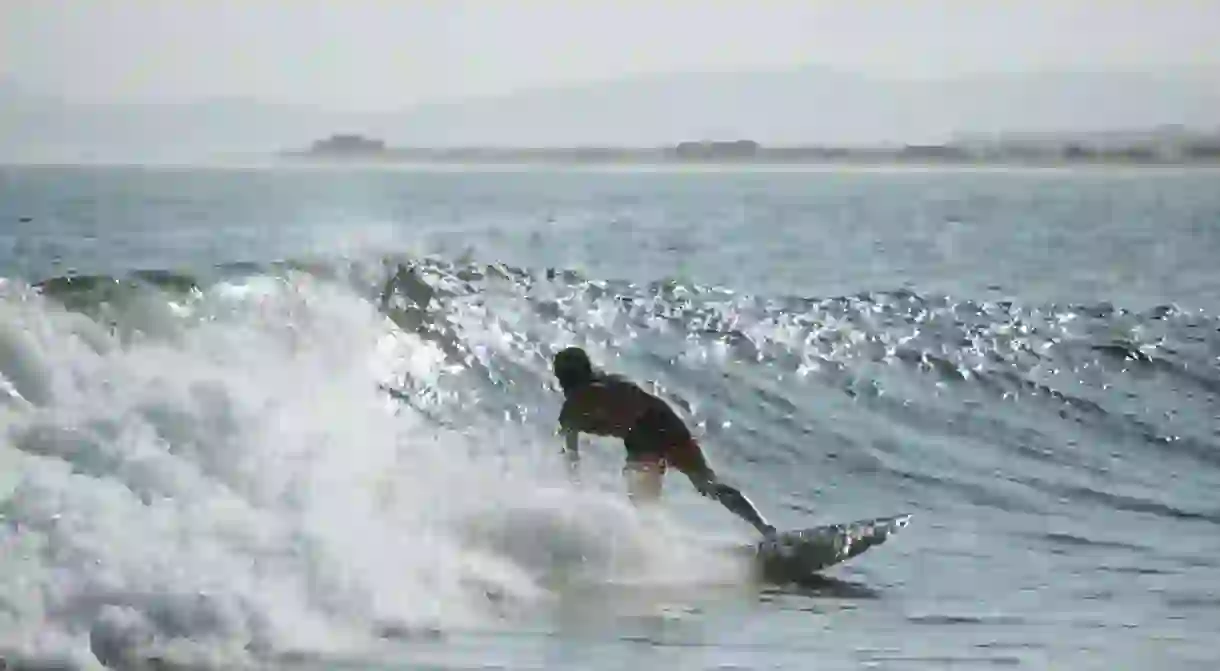A Surf-Lover's Guide to Visiting Peru

Peru is one of the best countries in the world to score some epic surf. With thousands of miles of coastline and year-round swells, you’ll always find somewhere in Peru that is going off. While there are some crowds – especially in Lima and Mancora – with so much coastline, you’re bound find some empty lineups. Read our guide to surfing in Peru and find out why the world is taking notice.
North Coast
The north coast of Peru has warmer waters and will be sunny almost all year round. The best time for waves is during the summer months, from October to March, when Peru attracts more northerly swells that bring along warmer water. Summer time in the north of Peru is hard to beat: consistent swell, sun, and warmer waters.
Mancora
Though the village has changed, the waves have remained the same. Right out in front of Mancora’s main beach is a perfect left-hand reef break that’ll give you a long ride if you’re able to avoid the beginner surfers being pushed into the waves by their instructors. The beach faces northwest, so it’s best on a north swell, which it gets all throughout the summer time, offering rideable waves nearly every day. If it’s high tide (which is the only time you can surf it, because of all the rocks) and there’s a decent-sized swell, just down the beach south of the main break is another, less crowded wave called Punta Ballenas. Mancora offers plenty of surf schools and surf boards for rent on the beach, right in front of the main break.

Playa Chicama
Considered the longest left in the world, Chicama is a must-visit for every surfer. It’s not as touristy as Mancora, but on a good day you’ll find a rowdy lineup and maybe even a world-class surfer or two. While it is the longest left in the world, it is mostly made up of different sections that surfers can take off on along the wave. It is located 20 miles (32 kilometres) north of Trujillo and is sunny almost all year. Bring a wetsuit, though, because the water can get cold in the winter.
Cabo Blanco
Dubbed “Peru’s Pipeline,” Cabo Blanco is a reef break that, when the swell is right, offers perfect left-hand barrels. The wave breaks over a reef, which can be dangerous and isn’t recommended for beginners. The beach is also known for the famous Cabo Blanco Fishing Club, frequented by Ernest Hemingway. It is a small fishing town, but when the waves are good, the town is full of surfers from Lima and all over the world. Expect Peru’s best surfers in the lineup when it’s firing.
Lima and the South
For most of the year, a thick fog hangs over the area, only clearing up for the summer months, which are hot and sunny. The water is cold in the winter and a little bit better in the summer, but you’re definitely going to need a wetsuit to surf here, no matter the season.
La Herradura
This is Lima’s best point break, located south of Miraflores in a neighborhood called Chorrillos. If the swell is right, you’ll score some epic surf and a world-class left-hand break. It isn’t the easiest to get to, because it is located out of the main tourist areas, but you can take a bus or a taxi to get here. You won’t find any boards to rent, so bring your own.
Punta Roquitas
This wave is right below the Miraflores boardwalk, which makes it a perfect location for those visiting Lima and staying in the Miraflores or Barranco areas. Depending on the swell, it can make for a difficult paddle-out, but it is worth it. You can find some fun lefts and rights, with all the attractions of Miraflores and Barranco close by. It’s convenient and fun if you catch it on a good swell. You can rent boards at Playa Waikiki, just down the beach, and occasionally someone will turn up with boards for rent at the break on a good day.
Pico Alto
This is one of the biggest waves in South America, drawing big-wave riders from all over the world. The wave only works when the swell is very big and every other break is closing out. It is quite a paddle-out just to get out to the lineup, which is why most people go out on boats or are towed out on a jet ski. Floating out in the Pacific Ocean, away from the shore, surfing 20-foot (6-metre) waves – Pico Alto is only for the seriously expert surfer.













